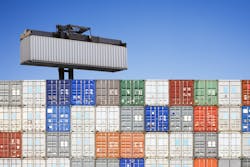Global Freight Markets Should Bounce Back in 2024
Jan. 4, 2024
2 min read
Given that it's early January, it's a great time to make predictions for the coming year. These predictions come from an article by Prologis.
Below is an excerpt.
The global freight recession will reverse, as demonstrated by double-digit growth in port and truck traffic. The Southern California region is likely to be among the first to benefit.
- Import volume at Los Angeles and Long Beach ports will exceed pre-pandemic levels. Combined, the ports saw a 46% resurgence in imports since the trough in February 2023, as temporary factors such as ILWU contract negotiations and the post- pandemic bullwhip effect faded as anticipated.
- Southern California logistics real estate demand will rank in the top 5 U.S. markets, reaching the highest level since 2021.
The great construction bust will intensify, with global starts hitting the lowest level since the 2008 financial crisis.
- Construction costs rose by 5-10% during 2023 in most geographies, with an exception in Europe.
- With cap rates expanding globally, up roughly 200bps in the U.S. and roughly 150bps in Europe, a reduction in development margins curtailed development starts. In 2023, spec development starts are down 65% y/y in the U.S. and more than 50% globally.
- Investments in manufacturing and infrastructure and a stabilizing housing market supported demand for construction materials, buttressing commodity prices. At the same time, labor markets remained tight, adding to cost pressures.
Technology, especially artificial intelligence, will drive up energy requirements in logistics facilities, incentivizing warehouse owners to double solar capacity.
- Spending on AI research and development is on a secular rise. In the U.S., government AI expenditures alone grew 21% y/y in 2022.2Derivative data center requirements will increase energy needs.
- At the same time, automation solutions will grow. We expect half of warehouses to utilize autonomous mobile robots in the next decade and 10-20% adoption of automated storage/retrieval systems in the next 10-15 years.
- Electric vehicle (EV) charging needs are rising. While China leads the deployment of electric trucks, adoption has broadened in Europe and the U.S., particularly in the last two years.3
- Solar energy is key for sustainable power generation. Costs are economically feasible, and government incentives can fast-track adoption. In addition, supply chain issues are unlikely to continue to restrain solar installations in 2024.
For the complete list of predictions, click here.
About the Author
Sign up for our eNewsletters
Get the latest news and updates
